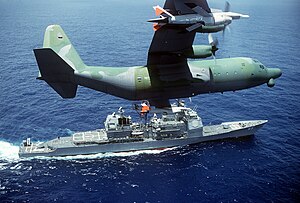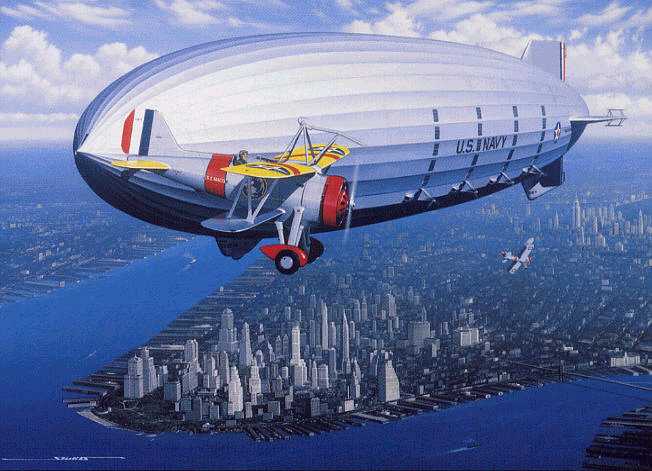DARPA invites input on how to enable existing large
aircraft to carry, launch and recover multiple unmanned air systems for
a variety of missions
Military air operations typically rely on large, manned, robust aircraft, but such missions put these expensive assets—and their pilots—at risk. While small unmanned aircraft systems (UAS) can reduce or eliminate such risks, they lack the speed, range and endurance of larger aircraft. These complementary traits suggest potential benefits in a blended approach—one in which larger aircraft would carry, launch and recover multiple small UAS. Such an approach could greatly extend the range of UAS operations, enhance overall safety, and cost-effectively enable groundbreaking capabilities for intelligence, surveillance and reconnaissance (ISR) and other missions.
To explore and expedite the possible development of these potential benefits, DARPA has issued a Request for Information (RFI) (http://go.usa.gov/AWpm) seeking technical, security and business insights addressing the feasibility and potential value of an ability to launch and recover multiple small unmanned air systems from one or more types of existing large manned aircraft, such as C-130 transport planes.
DARPA-SN-15-06 Request for Information (RFI) on Distributed Airborne Capabilities - DARPA-SN-15-06 - Federal Business Opportunities: Opportunities
: Added: Nov 07, 2014 2:45 pm
DARPA is interested in exploring the feasibility of small UAS airborne launch and recovery approaches for providing distributed airborne capabilities from existing air platforms. The agency envisions a large aircraft that, with minimal modification, could launch and recover multiple small unmanned systems from a standoff distance. It is postulated that there is a useful trade space in terms of launch platforms; recovery platforms; recovery techniques; the number of UAS employed; the size (and cost) of the UAS; UAS speed, range, and endurance; UAS propulsion; UAS survivability; payload types; and operational concepts.
DARPA seeks ideas for flying aircraft carriers - Washington Business Journal
The Pentagon wants an airborne aircraft carrier to launch drones - The Washington Post
Previous Efforts
Not the first time this idea has been tried.AUVSI: Boeing unfolds blueprint for air-launched ScanEagle UAV - 9/5/2006 - Flight Global
Manufacturer to enhance long-endurance design for aircraft and submarines
Boeing is working on an air-launched version of the ScanEagle unmanned air vehicle developed with Insitu. The system combines the ground-launched ScanEagle’s avionics, sensor payload and control station with a “compressed carriage” airframe designed for launch from aircraft or submarines to extend their sensor horizon.
An unnamed customer has asked Boeing to look at combining the ScanEagle’s systems with the airframe of its Area Dominator persistent munition to produce an air-launched UAV, says Larry Brown, the company’s manager, unmanned systems business development. The Dominator project is a US Air Force Research Laboratory technology demonstration for which Boeing flew an autonomous testbed in April.
The pusher-propeller vehicle folds for carriage on a standard bomb rack, or to be encapsulated for launch from a submarine torpedo tube.
After launch, the UAV unfolds, starts its engine and flies for 20h or more before being recovered on land or to a ship using the ScanEagle’s Skyhook hanging-rope recovery system. Control is from the aircraft or submarine or existing ScanEagle ground station.
Vietnam War Era
Lockheed DC-130 - Wikipedia, the free encyclopedia
RTO-MP-SCI-162-19 Separation Flight Tests of a Small Unmanned Air Vehicle from a C-130 Transport Aircraft.pdf
Abstract
Unmanned Air Vehicles (UAVs) are increasingly being considered for various roles in the civilian and military communities. Various launch methods have been explored and have been mostly ground based. The desire to investigate the feasibility of launching a UAV from a larger surrogate air platform existed, but had not been explored. As part of a concept demonstration program, NAVAIR’s Test and Evaluation Flight Test Department was requested to conduct flight tests to determine a flight envelope and launch system configuration for which a small (maximum gross weight of 80 lbs), unpowered UAV glider could be safely launched from the cargo ramp of a C-130 transport aircraft. A secondary goal was to demonstrate that the UAV would remain stable enough for the wings to deploy and be flyable via a pre-programmed profile or remotely located pilot. A roll-on/roll-off pneumatic launch system was devised to eject the UAV into the airstream in a controlled and consistent manner, and a test program was executed to incrementally expand the UAV safe launch envelope by building down to a minimum gross weight. Flight tests were conducted in September 2003. Safe separation from the C-130 aircraft was demonstrated, as well as UAV stability for successful wings deployment and fly-out. The success of these flight tests opens the door for development of similar air launched systems that could be used for a myriad of applications.
Citations
| 1 | X-UAV GL Flight Test Report - Taylor - 2002 (Show Context) |
| 1 | X-UAV GL Flight Test Report - Volk - 2002 (Show Context) |
| 1 | Experimental and Computational Investigation of the Flow Behind a C-130 with Tailgate Down”, Department of Aeronautics, U.S. Air Force Academy - Johnson, Forsythe, et al. - 2002 (Show Context) |
| 1 | Trajectory and Simulation Analysis of Ejected UAV/STV - Judy - 2003 (Show Context) |
| 1 | C-130 XPV/GL Separation Flight Test Program Report of Test Results 2003-209 - Judy - 2003 (Show Context) |
| 1 | DC-130 Military Utility Assessment Quick Look Summary - Judy - 2004 |
Airborne Carriers: An Idea Whose Time has yet to Come



No comments:
Post a Comment